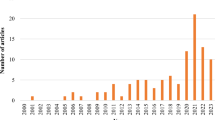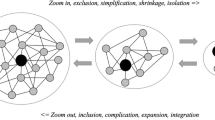Abstract
Social dimensions define whether wildlife disease is considered a problem, society’s response to wildlife disease, and the available solution space for wildlife health problems. Wildlife disease can have interacting environmental, human health, economic and sociocultural impacts on society, but the way in which society constructs wildlife disease as a problem is shaped by a much broader sociocultural landscape. The sociological imagination, with lines of historical, cultural, structural, and critical inquiry, provides a framework for investigating the social dimensions of wildlife health. The investigation of wildlife disease as a social problem requires wildlife health professionals to work in transdisciplinary teams that include social scientists and to meaningfully engage community stakeholders in a process of cooperative inquiry. The development of effective, real-world solutions to a wildlife health problem demands comprehensive knowledge of the social dimensions of that problem, drawing on diverse social science disciplines, and the implementation of a translational approach to the research endeavor.
Access this chapter
Tax calculation will be finalised at checkout
Purchases are for personal use only
Similar content being viewed by others
References
Albrecht G, Sartore G-M, Connor L, Higginbotham N, Freeman S, Kelly B et al (2007) Solastalgia: the distress caused by environmental change. Australas Psychiatry 15(sup1):S95–SS8
Bennett NJ, Roth R, Klain SC, Chan K, Christie P, Clark DA et al (2017) Conservation social science: understanding and integrating human dimensions to improve conservation. Biol Conserv 205:93–108
Blehert DS, Hicks AC, Behr M, Meteyer CU, Berlowski-Zier BM, Buckles EL et al (2009) Bat white-nose syndrome: an emerging fungal pathogen? Science 323(5911):227
Butler D (2008) Translational research: crossing the valley of death. Nature 453:840–842
Cafaro P (2015) Three ways to think about the sixth mass extinction. Biol Conserv 192:387–393
Cherry E (2018) Birding, citizen science, and wildlife conservation in sociological perspective. Soc Animals 26(2):130–147
Cole HV, Anguelovski I, Baró F, García-Lamarca M, Kotsila P, Pérez del Pulgar C et al (2020) The COVID-19 pandemic: power and privilege, gentrification, and urban environmental justice in the global north. Cities Health 2020:1–5
Cossyleon JE, Spitz G (2021) Collaborating, then stepping back: doing public sociology through participatory action research. In: Hossfeld L, Kelly EB, Hossfeld C (eds) The Routledge international handbook of public sociology. Routledge, London, pp 69–78
Daszak P, Cunningham AA, Hyatt AD (2001) Anthropogenic environmental change and the emergence of infectious diseases in wildlife. Acta Trop 78(2):103–116
Davis LF, Ramírez-Andreotta MD, Buxner SR (2020) Engaging diverse citizen scientists for environmental health: recommendations from participants and promotoras. Citizen Sci Theory Pract 5:1
Dickens P (1992) Society and nature: towards a green social theory. Temple University Press, Philadelphia
Field HE (2016) Hendra virus ecology and transmission. Curr Opin Virol 16:120–125
Galway LP, Beery T, Jones-Casey K, Tasala K (2019) Mapping the solastalgia literature: a scoping review study. Int J Environ Res Public Health 16(15):2662
Germov J (2018) Imagining health problems as social issues. In: Germov J (ed) Second opinion: an introduction to health sociology: an introduction to health sociology. Oxford University Press, Oxford, pp 2–23
Germov J, Poole M (2007) The sociological gaze: linking private lives to public issues. In: Germov J, Poole M (eds) Public sociology: an introduction to Australian society. Allen and Unwin, Crows Nest, NSW, pp 3–18
Hacker K (2013) Community-based participatory research. Sage, Los Angeles
Heffner GG, Zandee GL, Schwander L (2003) Listening to community voices: community-based research, a first step in partnership and outreach. J Higher Educ Outreach Engage 8(1):127–139
Holifield R, Chakraborty J, Walker G (2017) The Routledge handbook of environmental justice. Routledge, Abingdon
Humboldt-Dachroeden S, Rubin O, Frid-Nielsen SS (2020) The state of one health research across disciplines and sectors: a bibliometric analysis. One Health 10:100146
Macionis JJ, Plummer K (2005) Sociology: a global introduction, 3rd edn. Pearson, Harlow
Manyweathers J, Field H, Longnecker N, Agho K, Smith C, Taylor M (2017) “Why won’t they just vaccinate?” horse owner risk perception and uptake of the Hendra virus vaccine. BMC Vet Res 13:1
Matthewman S, Huppatz K (2020) A sociology of Covid-19. J Sociol 56(4):675–683
Milich KM, Sorbello K, Kolinski L, Busobozi R, Kugonza M (2021) Case study of participatory action research for wildlife conservation. Conserv Sci Pract 3(2):e347
Mills CW (2000) The sociological imagination. Oxford University Press, Oxford
Mohai P, Pellow D, Roberts JT (2009) Environmental justice. Annu Rev Env Resour 34:405–430
Moodie RL (1917) Studies in paleopathology. I. General consideration of evidence of pathological conditions found among fossil animals. Ann Med Hist 1(4):374–393
Mysterud A, Rolandsen CM (2018) A reindeer cull to prevent chronic wasting disease in Europe. Nat Ecol Evol 2(9):1343–1345
Odeniran PO, Ademola IO, Jegede HO (2018) A review of wildlife tourism and meta-analysis of parasitism in Africa’s national parks and game reserves. Parasitol Res 117(8):2359–2378
Ohmer MEB, Alton LA, Cramp RL (2021) The role of conservation physiology in mitigating social-ecological traps in wildlife-provisioning tourism: a case study of feeding stingrays in the Cayman Islands. In: Madliger CL, Franklin CE, Love OP, Cooke SJ (eds) Conservation physiology: Applications for wildlife conservation and management. Oxford University Press, Oxford. https://doi.org/10.1093/oso/9780198843610.003.0010
Panu P (2020) Anxiety and the ecological crisis: an analysis of eco-anxiety and climate anxiety. Sustainability 12(19):7836
Peggs K (2012) Animals and sociology. Palgrave Macmillan, Houndsmill
Peters A, Carver S, Skerratt LF, Meredith A, Woods R (2019) A solutions-focused translational research framework for wildlife health. Bioscience 69(12):1019–1027
Phoofolo P (1993) Epidemics and revolutions: the rinderpest epidemic in late nineteenth-century southern Africa. Past Present 138:112–143
Rizzolo JB (2017) Exploring the sociology of wildlife tourism, global risks, and crime. In: Gore ML (ed) Conservation criminology. Wiley, Chichester, pp 133–154
Scheele BC, Pasmans F, Skerratt LF, Berger L, Martel A, Beukema W et al (2019) Amphibian fungal panzootic causes catastrophic and ongoing loss of biodiversity. Science 363(6434):1459–1463
Stratford E, Mazur N, Lunney D, Bennett D (2000) Managing the koala problem: interdisciplinary perspectives. Conserv Biol 14(3):610–618
Tablado Z, D’Amico M (2017) Impacts of terrestrial animal tourism. In: Blumstein D, Geffroy B, Samia D, Bessa E (eds) Ecotourism’s promise and peril. Springer, Cham, pp 97–115
Tweddle NE, Livingstone P (1994) Bovine tuberculosis control and eradication programs in Australia and New Zealand. Vet Microbiol 40(1):23–39
Van Krieken R, Habibis D, Smith P, Hutchins B, Haralambos M, Holden R (2006) Sociology: Themes and perspectives, 3rd edn. Pearson Longman, Sydney
Vera H (2016) Rebuilding a classic: The social construction of reality at 50. Theory Cult Soc 10(1):3–20
Whittington RJ, Crockford M, Jordan D, Jones B (2008) Herpesvirus that caused epizootic mortality in 1995 and 1998 in pilchard, Sardinops sagax neopilchardus (Steindachner), in Australia is now endemic. J Fish Dis 31(2):97–105
Yearley S (2002) The social construction of environmental problems: a theoretical review and some not-very-Herculean labors. In: Dunlap RE, Buttel FH, Dickens P, Gijswijt A (eds) Sociological theory and the environment: Classical foundations, contemporary insights. Rowman and Littlefield, Lanham, pp 274–285
Author information
Authors and Affiliations
Corresponding author
Editor information
Editors and Affiliations
Rights and permissions
Copyright information
© 2022 The Author(s), under exclusive license to Springer Nature Switzerland AG
About this chapter
Cite this chapter
Peters, A., Masterman-Smith, H., Rafferty, J. (2022). Investigating Wildlife Disease as a Social Problem. In: Stephen, C. (eds) Wildlife Population Health. Springer, Cham. https://doi.org/10.1007/978-3-030-90510-1_7
Download citation
DOI: https://doi.org/10.1007/978-3-030-90510-1_7
Published:
Publisher Name: Springer, Cham
Print ISBN: 978-3-030-90509-5
Online ISBN: 978-3-030-90510-1
eBook Packages: Biomedical and Life SciencesBiomedical and Life Sciences (R0)




